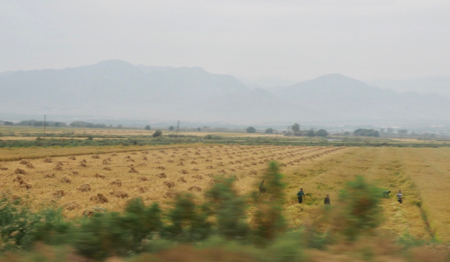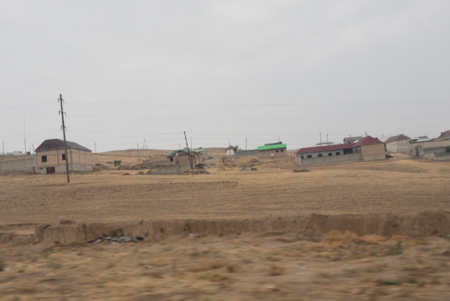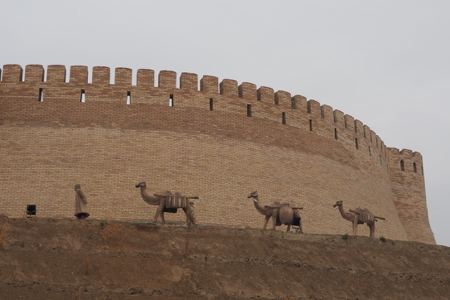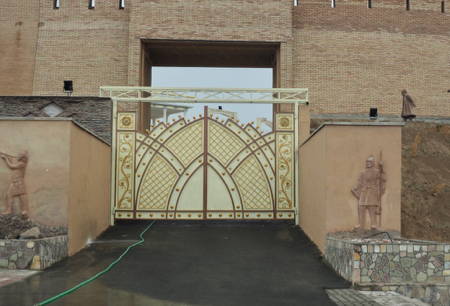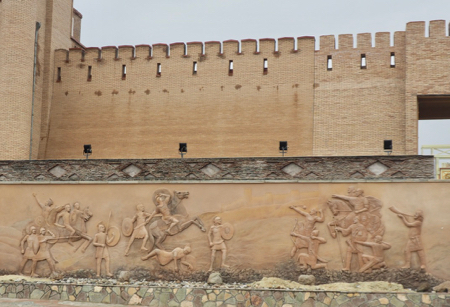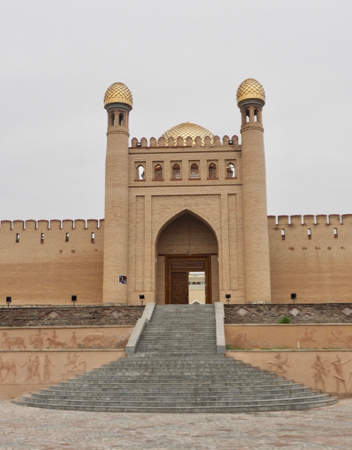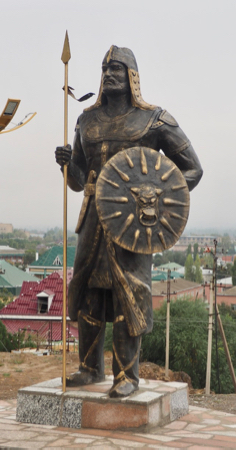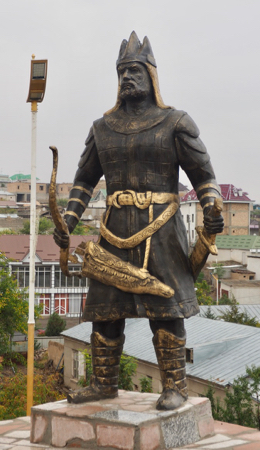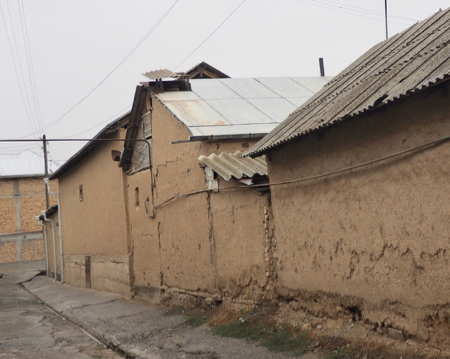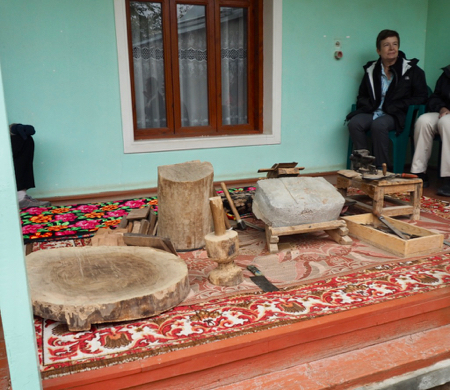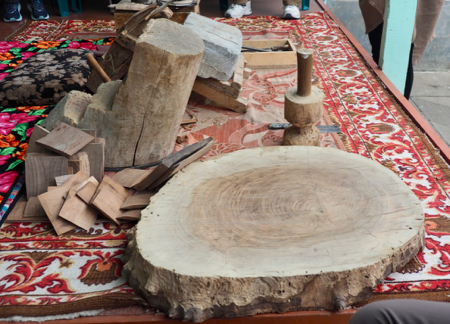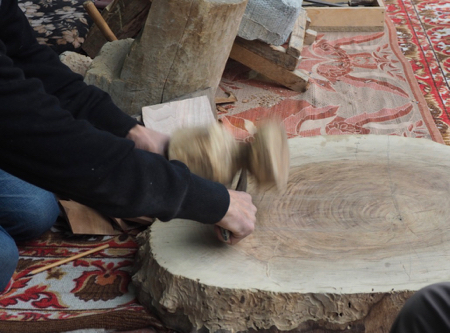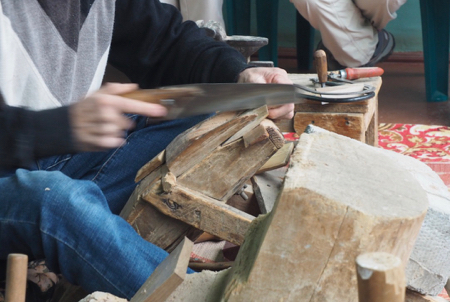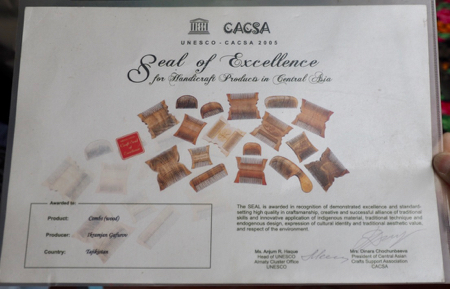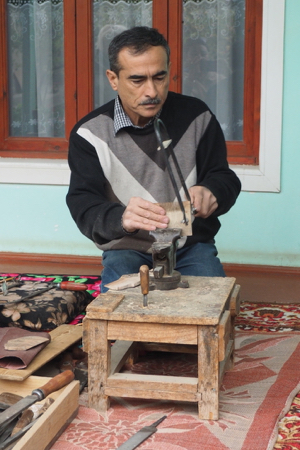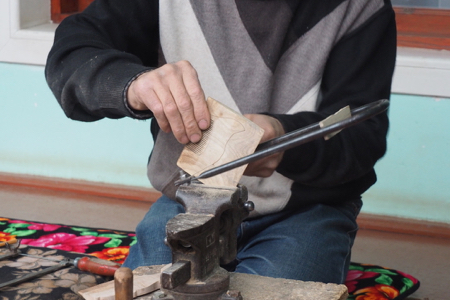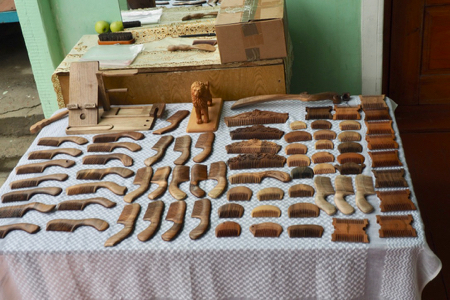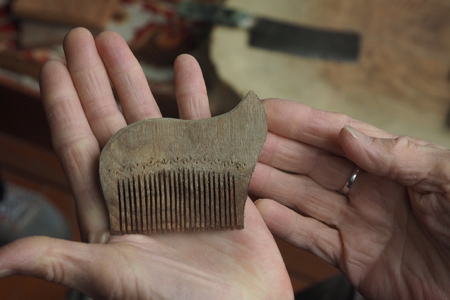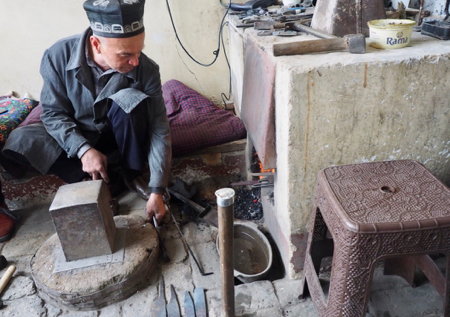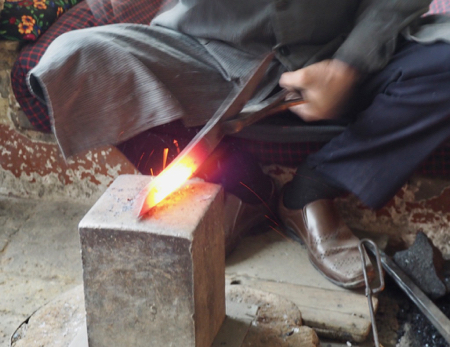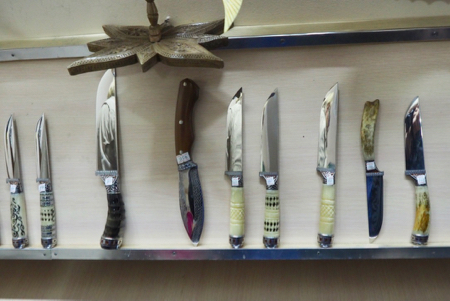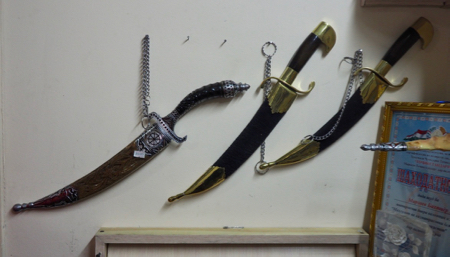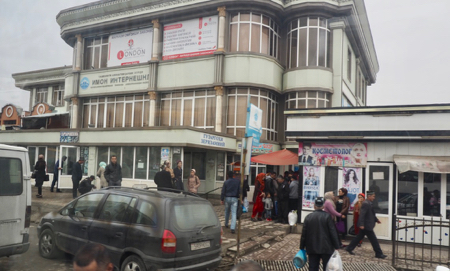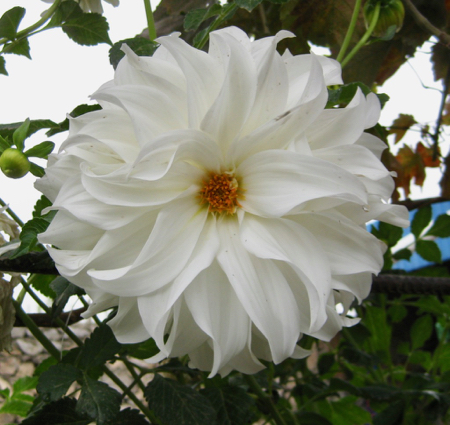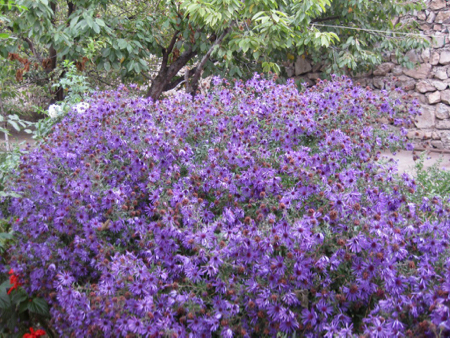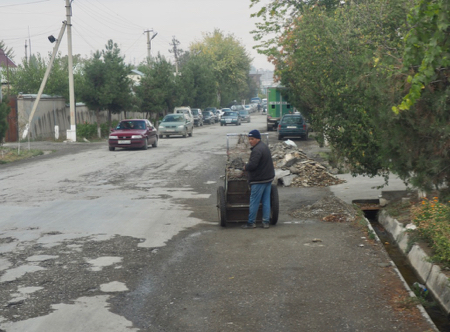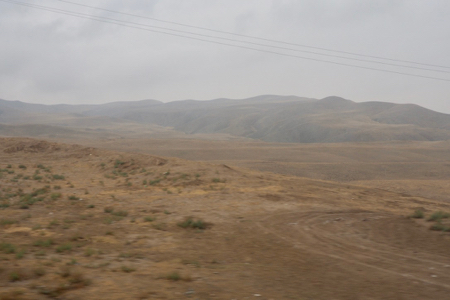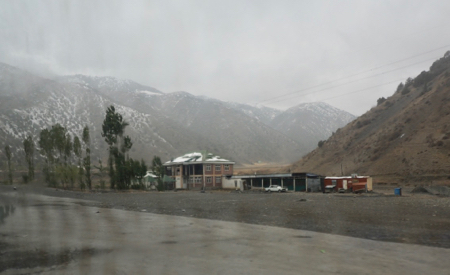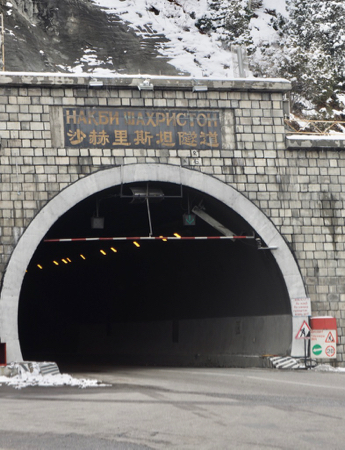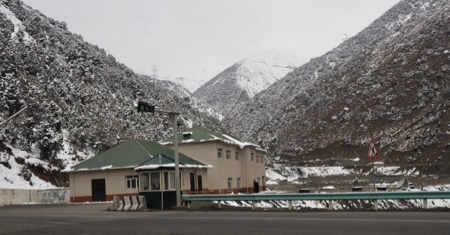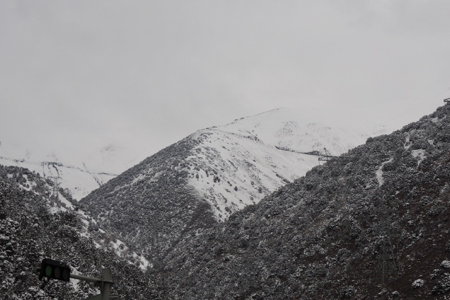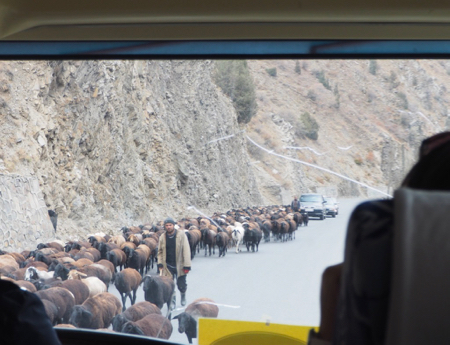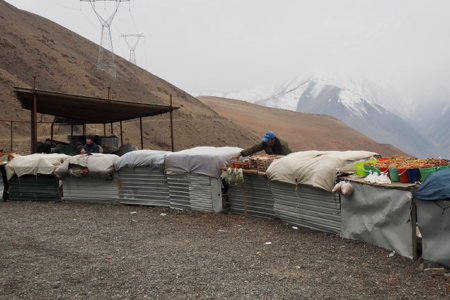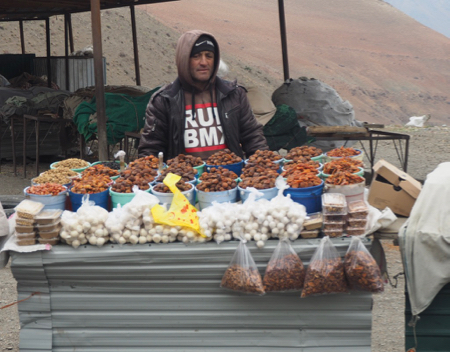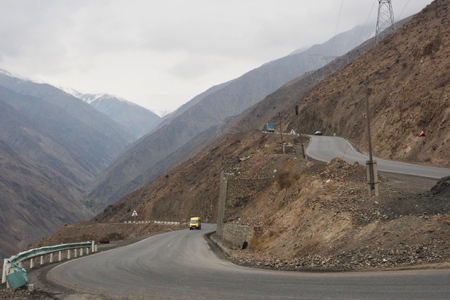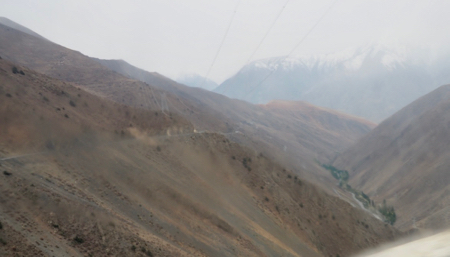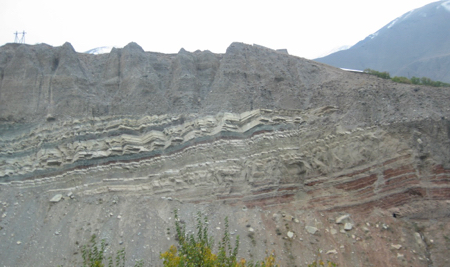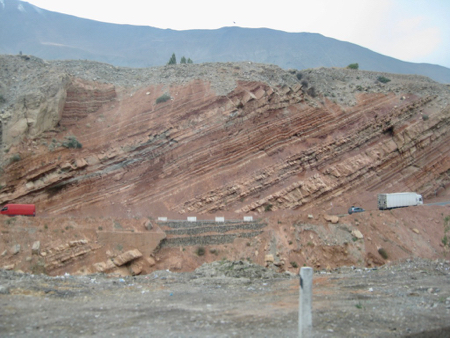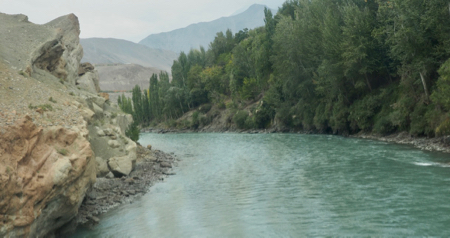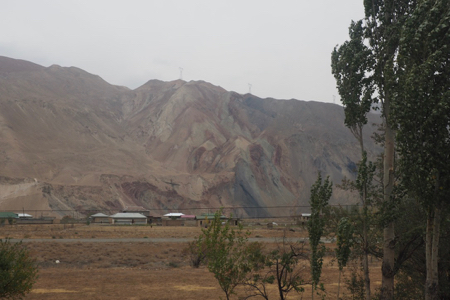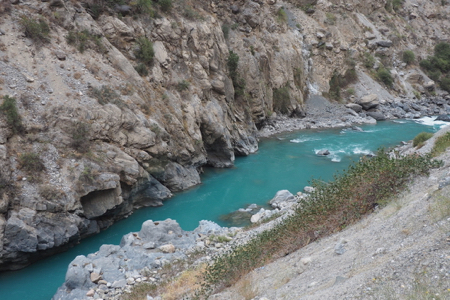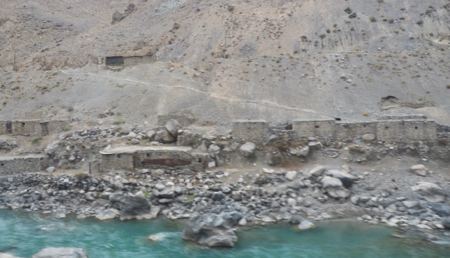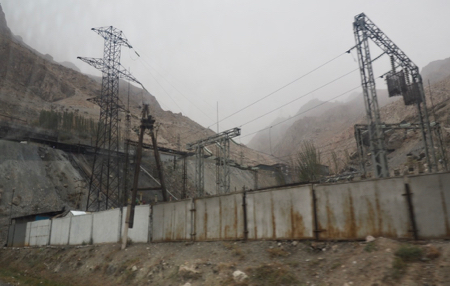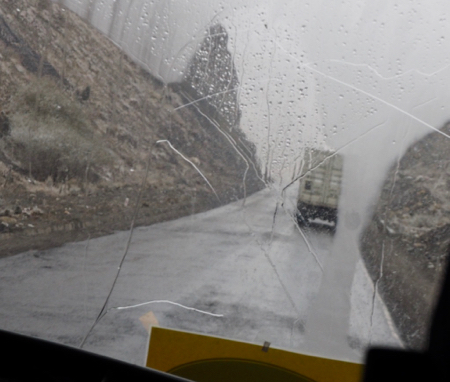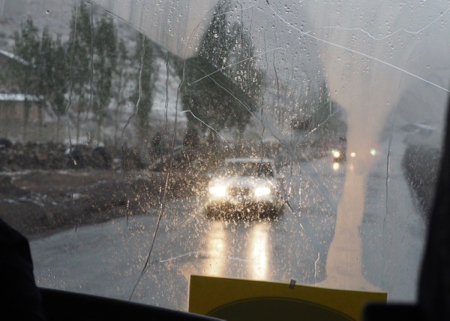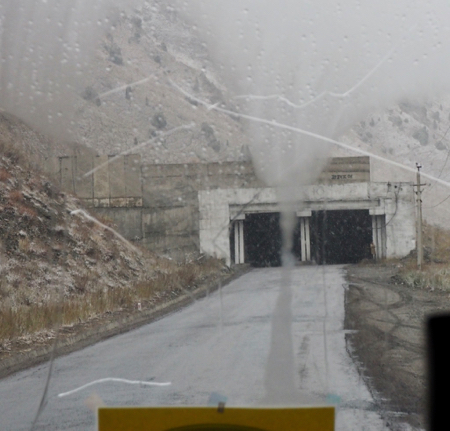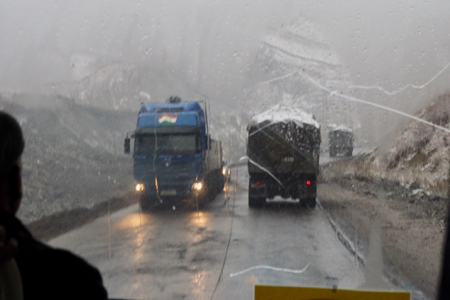Wed., 10/10/18 - Khujand to Dushanbe, Tajikistan
It is about 230 miles from Khujand in the north of Tajikistan to Dushanbe, the capital, in the south. It takes 5 to 7 hours to drive over the mountains in between the two. At least most of the drive was on a Chinese built, paved road. It was still very bumpy and our old bus vibrated uncomfortably.
Along the way we stopped to “discover” Istaravshan, and ancient center for trade and craftsmanship and the home city of Sitara, our Tajik guide. This city is well situated along two rivers and is surrounded by hills with watchtowers. We took pictures of the a reconstructed Fortress Mug Teppe originally on this hill in 4th c. BCE and decimated over the centuries. It had large statues of Persian warriors outside and nothing inside.
Hay harvest
A village
Fortress Mug Teppe - wall with camel caravan statues
Main gate
Wall mural
Entrance
Warrior statues
Warrior statues
Since Istaravshan is a UNESCO site of native traditional crafts, we visited a comb maker and a knife maker. The comb maker showed us how he makes “children’s” combs from walnut wood. There are 17 steps involved to make the final product.
Street scene
Making combs
The wood
Cutting out the form
Sawing out the teeth
Finished products
The knife maker uses white or black steel to forge the blades and makes handles from antlers or bone. His son decorates the handles with a jeweler’s skills.
Stoking the fire
Forging
Finished products
Finished products
Street scene
Street scene
We left Istaravshan after lunch and headed south over the Pamir Mountains on the M41 or Pamir Highway. There are two high passes and several tunnels along the way. It started to snow and stick to the rocks but not the road. Visibility was very poor, but that did not stop Abdullah from passing the coal trucks and tandem trucks that were going about 10 miles an hour up and down the hills, probably in first gear. The problem was he passed on curves and solid lines with very limited visibility. We would not have wanted to fall into the water ditch on one side or over the steep nearly vertical drop off on the other side. There were also places where herds of sheep shared our road. I have no idea what even a hungry sheep could find to eat on these rocky mountainsides.
The tunnels were interesting. The new, 3-mile long northern tunnel, was built by China. If we expected that "new" meant smooth pavement and lights, we were very wrong: bumpy, unpaved in places, and only an occasional dim lighting. The 3 1/2-mile southern one was built by Iran - the Anzob Tunnel or Tunnel of Death. They used too much dynamite at one point which opened seams for water to flow in and flood the tunnel. Cars got stuck in a foot of water and since there was no ventilation in any of the tunnels, 100 people died of CO2 poisoning. We got through okay.
We are thankful we made it in one piece. It was one of our more exciting OAT rides.
Steppes and mountains
Nasty weather
Entry to the Chinese-built tunnel
Wintery weather
Sharing the road
Cold way to make a living
Lots of switchbacks
Long ways down
Strata
Road and strata
Different minerals add color to the rocks
Mountain river
Former stone housing for workers
Power sub-station
Nasty
Nasty
Anzob Tunnel or Tunnel of Death
Heavy truck traffic
We finally made it to Dushanbe at 6:15 PM. It was a settlement as early as second century BCE. Dinner was a buffet at our hotel.
| Return to Top | Return to Itinerary | Return to Trips page to view other trips | Return to Dreamcatcher Home Page |
